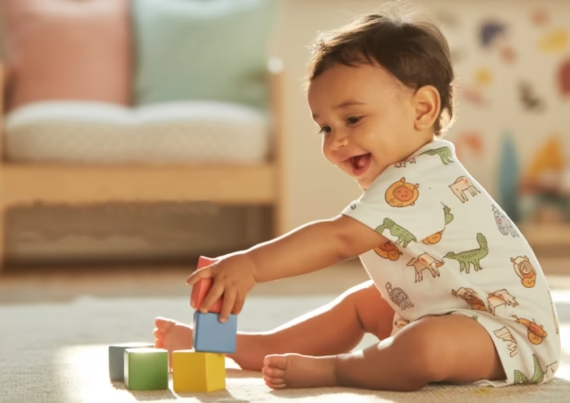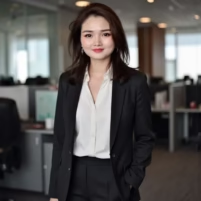Rayon vs. Viscose: A Baby Clothing Manufacturer’s Guide to Choosing the Right Fabric
When it comes to manufacturing baby clothing, the choice of fabric is paramount. Parents prioritize softness, safety, and comfort for their little ones, and a key consideration for every baby clothing manufacturer is the distinction between rayon and viscose. While these terms are often used interchangeably, understanding their technical differences and implications is crucial for a brand’s reputation and product quality. This guide for baby clothing manufacturers delves into the properties, production, and sustainability of these two popular materials.

With 17 years of experience, petelulu provides a full range of
manufacturing services from design to delivery.
Start from scratch , Create your own brand.
17+
serving top 10 American brands
15+
serving top 10 Australian brands
12+
serving top 10 European brands
Contact us to get the quote.👇
Understanding the Terminology: Rayon and Viscose
The first step in making an informed decision is clarifying the relationship between viscose and rayon. Rayon is a family of semi-synthetic fibers created from natural cellulose, typically sourced from wood pulp or bamboo. Viscose is the most common and oldest type of rayon. Essentially, all viscose is rayon, but not all rayon is viscose. Other forms of rayon include Modal and Lyocell, which are made using different chemical processes and have distinct properties. For the purpose of baby clothing manufacturing, the terms often refer to the same type of soft, plant-based fiber, but it’s important to recognize the broader category.
The Properties of Viscose Rayon for Baby Clothing
Manufacturers and parents alike are drawn to viscose rayon for its desirable qualities.
-
Exceptional Softness: Viscose rayon is prized for its buttery-soft, silky feel, which is gentle and non-irritating on a baby’s delicate skin. This quality is a primary reason it’s so popular for onesies, pajamas, and blankets.
-
Breathability and Moisture-Wicking: The porous structure of viscose fibers allows for excellent air circulation. This helps to regulate a baby’s body temperature, keeping them cool in warm weather and cozy when it’s cooler. The fabric is also highly absorbent and wicks moisture away from the skin, preventing discomfort and potential rashes.
-
Hypoallergenic: Viscose rayon is often marketed as hypoallergenic, as it’s naturally resistant to dust mites and other allergens. This makes it a suitable choice for babies with sensitive skin.
One of the most significant benefits for a baby clothing manufacturer is that viscose can mimic the luxurious feel of natural fibers like silk, but at a more accessible price point.
The Environmental and Ethical Considerations
While the feel and function of viscose rayon are appealing, a responsible baby clothing manufacturer must also consider the production process. The journey from wood pulp to soft fabric is complex and has raised environmental and ethical concerns.
-
Chemical-Intensive Production: The most common method for creating viscose involves a “solution spinning” process that uses strong chemicals, including sodium hydroxide and carbon disulfide. The latter is a known human reproductive hazard and can be toxic to factory workers and the environment. Unfortunately, many factories only recover a portion of these chemicals, leading to air and water pollution.
-
Deforestation: The wood pulp used for viscose and rayon often comes from fast-growing plants like bamboo or eucalyptus. However, a significant portion of this pulp is sourced from ancient and endangered forests, contributing to deforestation. It’s estimated that less than 30% of global viscose production is sustainably sourced. [Source: Good On You]
-
The Rise of Sustainable Alternatives: To address these concerns, more sustainable forms of rayon, such as Lyocell (often sold under the brand name Tencel™) and EcoVero™, have emerged. These fibers are produced in a “closed-loop” system that recycles water and solvents, significantly reducing environmental impact. A savvy baby clothing manufacturer looking to appeal to eco-conscious consumers should explore these options.
Viscose Rayon vs. Organic Cotton: A Comparison
When deciding on a fabric for a new line, it’s helpful to compare viscose rayon with another popular natural material: organic cotton. The choice for a baby clothing manufacturer is a balance of softness, durability, and sustainability.
-
Softness: Viscose rayon is generally softer and silkier than most organic cotton, which is often a key selling point.
-
Durability: While both fabrics are durable, viscose rayon can be more prone to shrinking or losing shape if not washed correctly. Organic cotton, grown without harsh chemicals, has strong fibers that can withstand repeated washings.
-
Sustainability: This is where the choice becomes more nuanced. While bamboo grows faster and requires less water than cotton, the chemical-intensive processing of conventional viscose can negate its natural advantages. Organic cotton’s production process is generally considered safer, though it is more water-intensive than a closed-loop rayon system.

With 17 years of experience, petelulu provides a full range of
manufacturing services from design to delivery.
Start from scratch , Create your own brand.
17+
serving top 10 American brands
15+
serving top 10 Australian brands
12+
serving top 10 European brands
Contact us to get the quote.👇
Conclusion for a Baby Clothing Manufacturer
For a baby clothing manufacturer, the choice between fabrics like viscose and rayon is a balance between a product’s comfort and its ethical footprint. Viscose rayon offers unparalleled softness, breathability, and moisture-wicking properties, making it an excellent choice for keeping babies comfortable. However, manufacturers must be transparent with consumers about the fabric’s origins and production methods.
To stand out in a competitive market, a baby clothing manufacturer can move beyond conventional viscose. By sourcing from certified sustainable suppliers or exploring next-generation rayons like Lyocell and EcoVero, a brand can offer the same luxurious feel while ensuring its practices align with the growing demand for ethical and environmentally responsible baby clothing.
About the author
Xhiney, founder of Petelulu, brings over 20 years of experience in children’s wear design, production, and international trade. A contributor to Children’s Wear and Junior magazines, Xhiney has spent 17 years working with high-end children’s wear brands in Europe and the U.S., offering expert insights and support.
